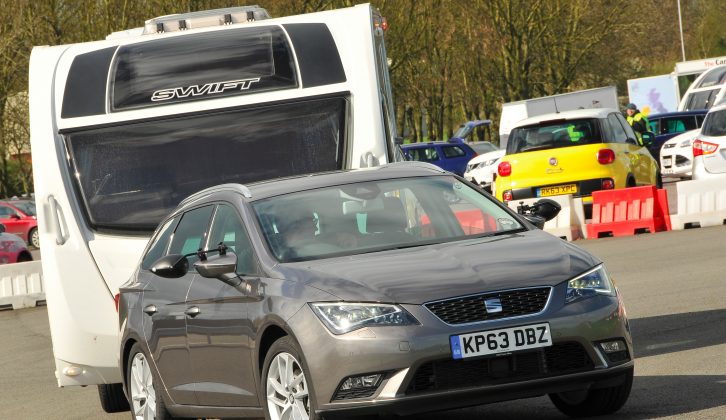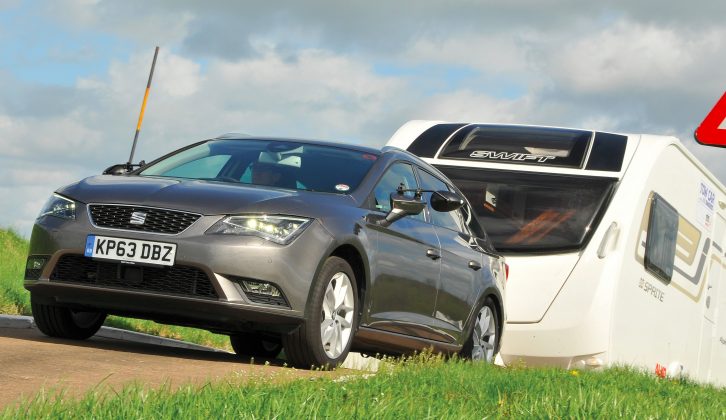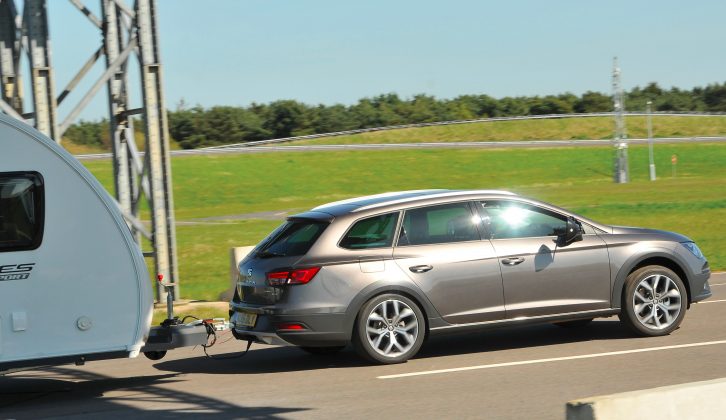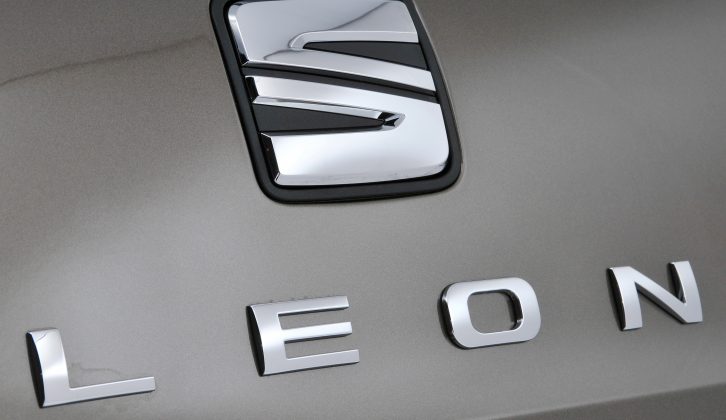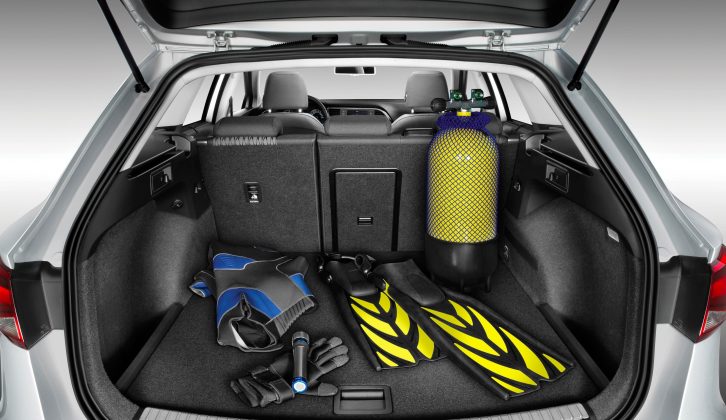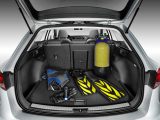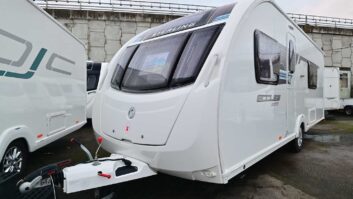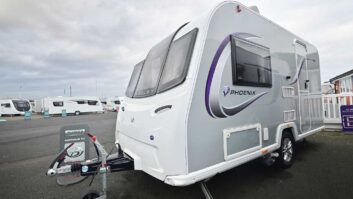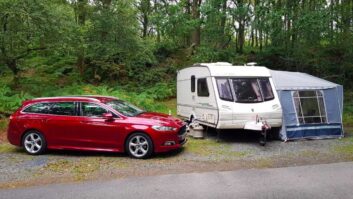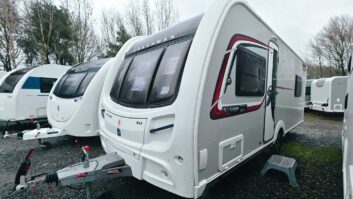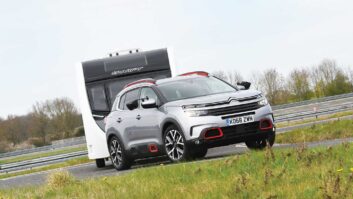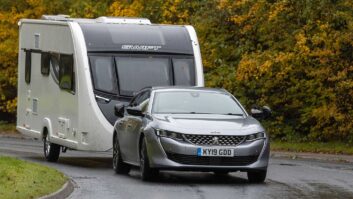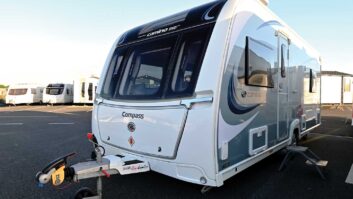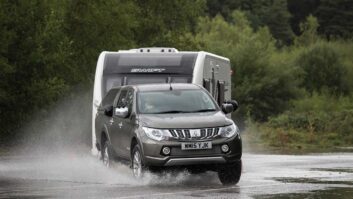The third-generation Seat Leon appeared early in 2013, but it wasn’t until autumn of that year that the estate (ST) saw the light of day.
It was aimed at buyers with an active lifestyle, who needed the extra space and strength of an estate car but, didn’t necessarily want to look as if they needed an estate – people who wanted to look like the cool kids on the campsite – but what tow car skills does it offer caravanners?
The engine range was comprehensive, and comprised 1.2- and 1.4-litre petrol engines, plus a punchy 1.8-litre turbo that is likely to be thirsty when towing.
The entry-level diesel was a 1.6 TDI, which is extremely averse to fuel stations but also a little lightweight for serious towing duties.
The one to go for
That leaves the 2.0 TDI 150 we focus on here, which provides the ideal blend of pulling power and economy that caravanners crave.
Under the bonnet lies a 2.0-litre turbodiesel engine that produces 148bhp and 236lb ft of torque, and – according to the official figures, at least – it’ll return an average of 68.9mpg.
This model was available with a six-speed manual gearbox, or a six-speed DSG twin-clutch auto as an option.
There are plenty of examples of either out there, so prospective buyers can take their time and choose the ideal car for their needs.
If you fancy something a smidgen more rugged, why not try the Seat Leon X-Perience that came out late in 2014?
This has the same engine and an inch more ground clearance, chunky body cladding and, crucially, four-wheel drive.
And we know what tow car talent that model has – it was second in its weight class at the 2015 Tow Car Awards.
Model history
First deliveries of the Leon ST began in January 2014, and it immediately became a strong performer in the family estate category, with a spacious, well-equipped cabin and sizeable boot area.
There’s 587 litres of space available when the rear seats are in place, and 1470 litres when they’re folded.
And the good news is, should you opt for the X-Perience, with its four-wheel-drive system, you’ll pay no penalty in boot space.
What trim to go for?
There were three trim levels available from launch: S, SE and sporty FR, with all being pretty well stocked.
The best all-rounder was SE trim, which came with cruise control, climate control, Seat’s high-quality infotainment set-up and rear parking sensors.
All Leon STs have dual-level boot floors and a one-tug system for lowering the rear seats.
Stepping up to FR trim brought Adaptive Chassis Control and a Dynamic Pack that included variable-ratio steering for quicker responses.
Beware, though: drive the car the way Seat intended the FR to be driven, and you’re likely to make the kids feel sick.
The Leon ST is a confidence-inspiring tow car, with strong acceleration, stability in lane changes, and no drama during rapid stops.
Hill starts should present no undue problems either, although you will need to give the handbrake a hefty pull on steeper slopes.
Hard to find fault
Downsides are few, and concern mainly centres around a ride that is slightly too firm, and the fact that there’s too much road noise at speed.
Front-seat space is generous, even for taller occupants, and the back-seat area is reasonable.
The Seat Leon ST shouldn’t be too costly to run either, because while cars rarely manage their claimed figures in the real world, an average of more than 50mpg should be achievable in day-to-day driving.
The 2.0 TDI 150’s low CO2 output of just 106g/km means road tax will set you back just £140 per year.
Trouble spots
The good news for potential buyers is that the engine in the Leon ST is unaffected by all of the emissions-based dramas surrounding parent company the VW Group, so any purchase is unlikely to be subject to a recall (as long as there are no further revelations).
Apart from that, reliability issues are rare. The Leon has been subject to only one recall in the UK, for an issue with the child locks on the rear doors.
Some locks were found to disengage without warning, allowing the rear doors to be opened from the inside, so it would be worth making sure that any car you’re looking at has had this issue resolved.
Simply note down the car’s chassis number and visit the Driver & Vehicle Standards Agency website, where you’ll find all the details.
The Seat Leon ST is still a young car, but appears to be utterly bulletproof, with no fundamental reliability concerns voiced so far.
If the car you’re looking at has any kind of issue, it’s far more likely to be due to neglect by the previous owner than any underlying flaw.
However, the Leon ST is not a very cheap car to service. Even an interim service will set you back around £226, and a major fettling will cost north of £330.
That’s worth bearing in mind if you do a lot of miles.
Verdict
The Seat Leon ST is a very decent tow car indeed.
It is reasonably hefty for a compact car, so can tow a fair-sized outfit, and it is strong and smooth while doing so.
When you get to your destination and unhitch, it’ll be great fun and brilliantly economical, and there’s a good amount of room for four people and their luggage.
If you do decide to opt for the four-wheel-drive X-Perience version, take care to ensure that the previous owner hasn’t been over-zealous when heading off-road.
With every Seat Leon ST, simply make sure that the servicing has been done on time, every time, and you’ll end up with a great all-round towing companion.
As we said, our top choice from the range as a tow car is the 2.0 TDI 150 SE. This 148bhp version of the 2.0 TDI engine is more than strong enough for towing duties, and shouldn’t drink too much diesel while doing so.
However, we would avoid the 1.8 TSI 180 FR. While there’s no denying that the FR is a blast when you’re on your own, hitch it up and it will need to be revved reasonably hard to keep with traffic.
What you need to know
The Seat Leon ST has been out for only around three years, but already there are true bargains out there.
Just £6500 can get you into an early 1.6 TDI model, but at this price it’ll have plenty of miles under its belt.
A budget of around £14k will net you a much newer example of the coveted 2.0 TDI, with some of the warranty remaining.
Up your budget to £18,000 and you’ll get a 2016 (66-plate) car that’s virtually new.
The mileage will be around only 5-6000, which means that someone else has run in the car for you!
Here are some useful figures (for a 2016 Seat Leon ST 2.0 TDI 150):
- Kerbweight 1358kg
- 85% match 1280kg
- Towing limit 1600kg
- Towball limit 75kg
If you want to fit a tow ball, according to quotes we were given by PF Jones, a Witter flange towbar will be £124.32 and a Witter detachable towbar is £201.12 (fitting extra in both cases).
When it comes to servicing, an interim service is £226.30 and a full service is £330.75 (quotes from Servicing Stop).
Make sure that the servicing has been done on time, every time, and you’ll end up with a great all-round towing companion
